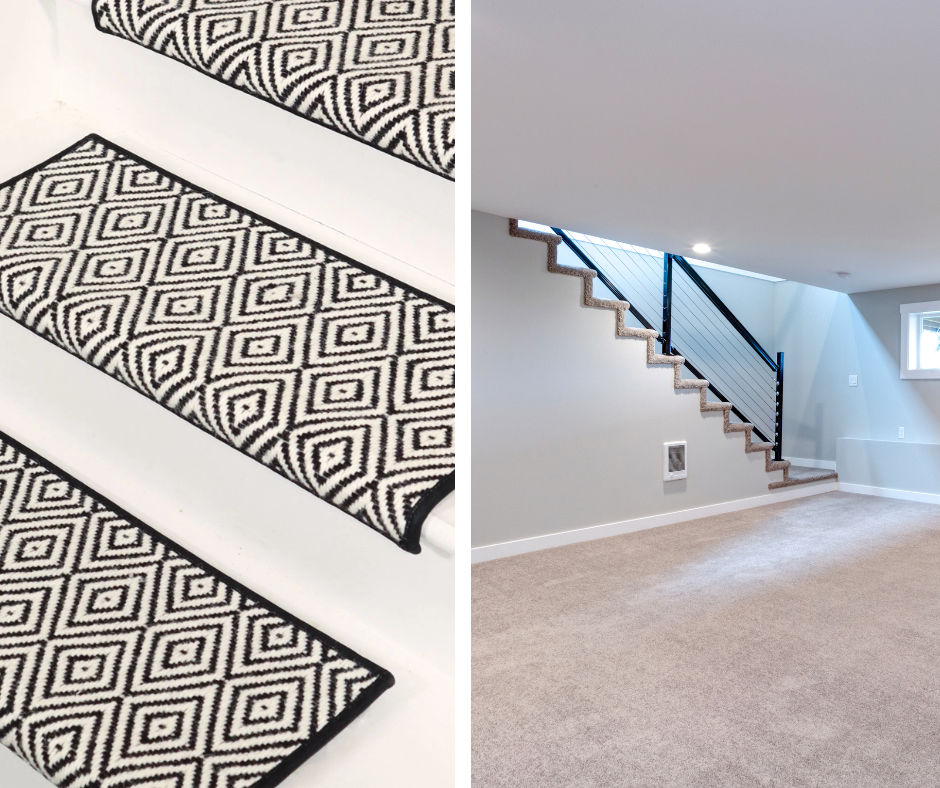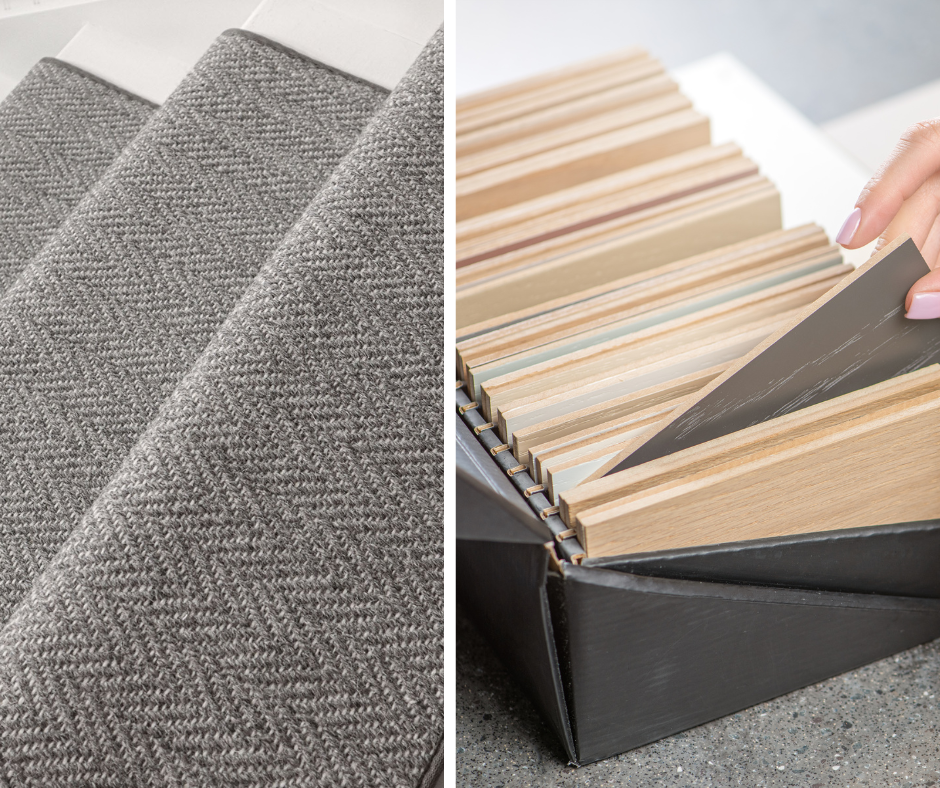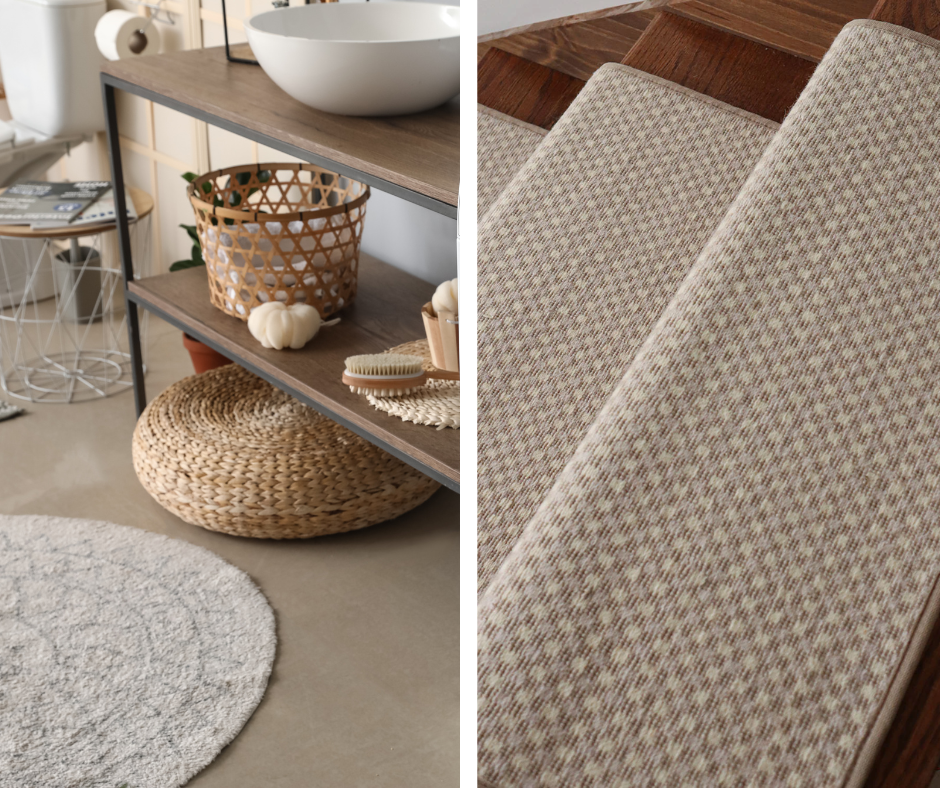Adding carpet stair treads for basement steps is an easy way to boost safety and style in your home.
These treads are designed to reduce the risk of slipping, making them especially useful for basement stairs, where moisture can make surfaces slippery.
Including carpet stair landings in your design can further enhance safety and cohesiveness, creating a seamless transition between different levels of your home.
Plus, they bring a cozy, comfortable feel to an area that’s often overlooked.
Why Use Carpet Stair Treads on Basement Steps?
Carpet stair treads are a great choice for basement steps because they combine safety with comfort.
Basement stairs are often harder and colder, so adding carpet treads can make each step softer and warmer underfoot.
They also help to quiet your home by absorbing the sound of footsteps, creating a more peaceful environment.
What Are the Best Materials for Carpet Stair Treads in Basements?
When picking carpet stair treads for your basement steps, durability and stain resistance are key.
Basements can be damp and prone to dirt, so you need materials that can handle these challenges.
Nylon and polypropylene (also known as olefin) are popular choices.
Nylon is tough and stands up to heavy use, while polypropylene is moisture-resistant, making it ideal for basements.
Modern Carpet Stair Treads
Modern carpet stair treads come in many styles and materials, allowing you to match them perfectly with your basement’s decor.
For a sleek, contemporary look, consider neutral tones like gray or beige that work well with most basement color schemes.
Loop pile carpets are durable, while cut pile carpets offer a plush, comfortable feel.
Both are available in stylish, modern designs that can elevate the look of your basement.
How to Choose the Right Thickness and Pile Height
Selecting the appropriate thickness and pile height for your carpet is crucial for achieving the desired look and functionality.
Balancing Safety and Comfort
The thickness and pile height of your carpet stair treads are important for safety and comfort.
A low to medium pile height, around 1/2 inch or less, is recommended for basement steps.
This height offers a good balance of comfort without creating a tripping hazard, which can occur with thicker carpets.
Low-pile carpets also maintain their appearance longer, even with heavy use.
Easy Installation and Maintenance
When installing carpet stair treads on basement steps, choose a thickness that wraps easily around the edges without bunching up.
This helps prevent hazards and makes installation easier.
Carpet pieces for stairs should fit snugly to avoid any loose edges that could cause slips.
Low-pile options like Berber or tightly woven loops are ideal for easy installation and maintenance.
Benefits of Carpet Stair Treads Over Full Carpeting
Carpet stair treads offer several advantages that make them an excellent alternative to full carpeting.
Flexibility and Convenience
Carpet stair treads offer flexibility that full carpeting can’t match.
They’re easier to install, replace, and clean.
If one tread gets worn or stained, you can replace it without redoing the entire staircase.
This makes carpet stair treads a convenient, cost-effective solution, especially for basement steps that might see more wear and tear.
Adding Comfort and Safety
While full carpeting covers every inch of your stairs, carpet stair treads provide targeted comfort and safety.
This focused approach makes them a better option if you’re looking to upgrade your basement stairs without the expense or hassle of full carpeting.
Steps to Success
Adding carpet stair treads for basement steps is a simple way to improve safety and style in your home.
Start by choosing durable materials like nylon or polypropylene that can handle the challenges of a basement environment.
Opt for low-pile treads that are easy to install and maintain.
Finally, select modern designs that fit your basement’s decor, making your stairs both safe and stylish.




